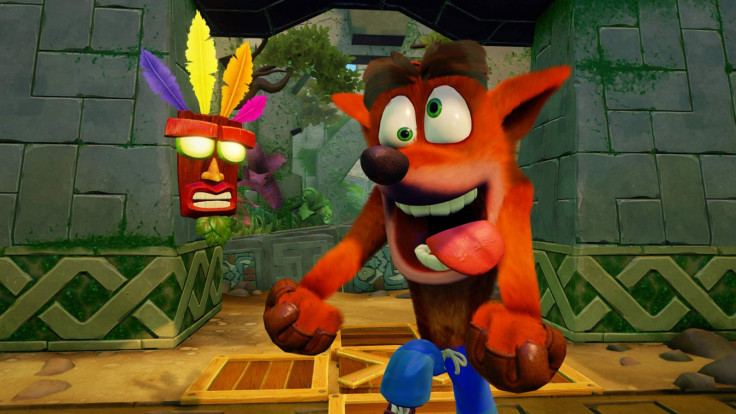Final Fantasy 12: The Zodiac Age is a masterclass in how to revive cherished games
Why Square Enix and Virtuos' PS4 remaster is among the best HD re-releases ever made.
After over a decade of fans debating whether it's actually any good, Final Fantasy 12 has been re-released today (11 July) on modern console hardware with a fresh lick of high-definition paint.
Subtitled The Zodiac Age, this PS4-exclusive remaster introduces a slew of updates and new features to the divisive Japanese RPG, which originally launched during the beloved PS2's twilight years.
This includes major gameplay mechanics previously exclusive to a version of the game that never saw the light of day outside of Japan.
As someone who adored Final Fantasy 12 and spent over a hundred hours in its medieval-themed world of Ivalice, it's perhaps no surprise that I'm quite taken by The Zodiac Age.
Its MMO-inspired combat and grounded take on Final Fantasy's typically grandiose mythology loses none of its refreshing strangeness in the transition to PS4, and the luscious Mediterranean-inspired environmental design and painterly art style look better than ever in HD, running at a solid frame rate.
It's telling, however, that Square Enix dropped the "HD Remaster" addendum that it tacked on to the recent Final Fantasy 10/10-2 collection. This isn't just a PS2 game with a spit-shine polish, it's the definitive version of a polarising classic.
The line between "remake" and "remaster" has always been a hazy one, but The Zodiac Age is the latest in a recent string of remasters that stretches their loose definitions to breaking point by reworking mechanics, adding entirely new features or having to 'remaster' entire games without a blueprint to work from.
Going N-Sane?
Just last week, the Crash Bandicoot N-Sane trilogy launched to staggering sales numbers, with platforming fans seemingly keen on reliving the beloved mascot's glory days in remastered form.
Except the game isn't exactly a remaster. Its developer Vicarious Visions detailed in a recent interview how, with no original source code or reference material, the studio instead had to rebuild the PS1-era Crash games from basic 3D meshes of their predecessors.
It was interesting to see a perception forming that the remasters were somehow harder and less forgiving. Evidence of sharper "pill shaped" collision boxes emerged backed up the claims shortly after, confirming that yes, the difficulty spikes were an unintentional side-effect of the studio having to create the gaming equivalent of a fancier drawing of an old, beloved stencil drawing without an actual stencil.

If sales and overall fan feedback are an indicator of success then Vicarious Visions succeeded in its mission to 'remaster' the Crash trilogy, but there's no shortage of examples that missed the mark, including The Zodiac Age co-developer Virtuos, which helped create 2016's Batman: Return to Arkham - an HD remaster collection of Bat-classics Arkham Asylum and Arkham City.
With the high-resolution overhaul came a brighter, less oppressive colour tone, bathing the shadowy corners of Arkham in an unwelcome glow, and turning the eponymous Dark Knight into the "Light Knight". While ostensibly an improvement in raw technical terms, the alterations alienated returning players - a scenario that raises an important question:
Just how far can you bend a remaster without breaking it?
A rekindled fantasy
The best remasters are more than simple restoration projects, they deliver on a game's nostalgic promise and capture a game as its fan remembers it, not necessarily as it was.
The Zodiac Age adheres to this ethos on a micro and macro scale, updating the game's look without trampling on its visual design and upgrading its gameplay without destroying its innate appeal.
For the former, The Zodiac Age's updated visuals and newly-arranged orchestral score lend gravitas to the game's sweeping open-world adventure, but it's in the latter area that the game excels.
Final Fantasy 12's Active Dimension Battle system and its AI-scripted Gambits took giant steps to shake up the Final Fantasy formula of ten years ago, and offered a deep tactical layer to both encounters and individual character growth. Yet even those who steadfastly defend its quirkier elements would struggle to argue that it was a little bit broken back in 2006.

Intended to harken back to Final Fantasy's earliest years, Final Fantasy 12's License Board allowed players to mould each party member to fit their own desires. The result however, was that certain unlocks were essential upgrades, making the rabbit-like Fran play identically to her Han Solo-styled companion Balthier should you want optimum strength.
The Zodiac Age fixes this with an optional secondary license board for each character - an addition that encourages experimentation more so than potentially any Final Fantasy game ever made, but crucially one that embodies the intent behind the mechanic in the first place.
Smaller changes also follow this commitment to creating an authentic Final Fantasy 12, but not replicating it. Auto saves are an absolute blessing, but those signature save crystals are still dotted around each map. It's also now possible to increase the game's speed to breeze through grinding sessions - a regular and necessary occurrence in Final Fantasy 12 that is levied further still in The Zodiac Age with minor balancing tweaks.
Final Fantasy 12 is far from perfect, of course. The segmented world design littered with (mercifully shortened) loading screens, occasionally unintuitive menus and weaker final act are never going to be fully solved without a complete overhaul.
Nevertheless, The Zodiac Age is a masterclass in how to remaster a cherished game - not just because of all it preserves, but because of the alterations it is brave enough to make to capture its greatness for those unwilling to look at it through a pair of rose-tinted glasses.
© Copyright IBTimes 2025. All rights reserved.






















